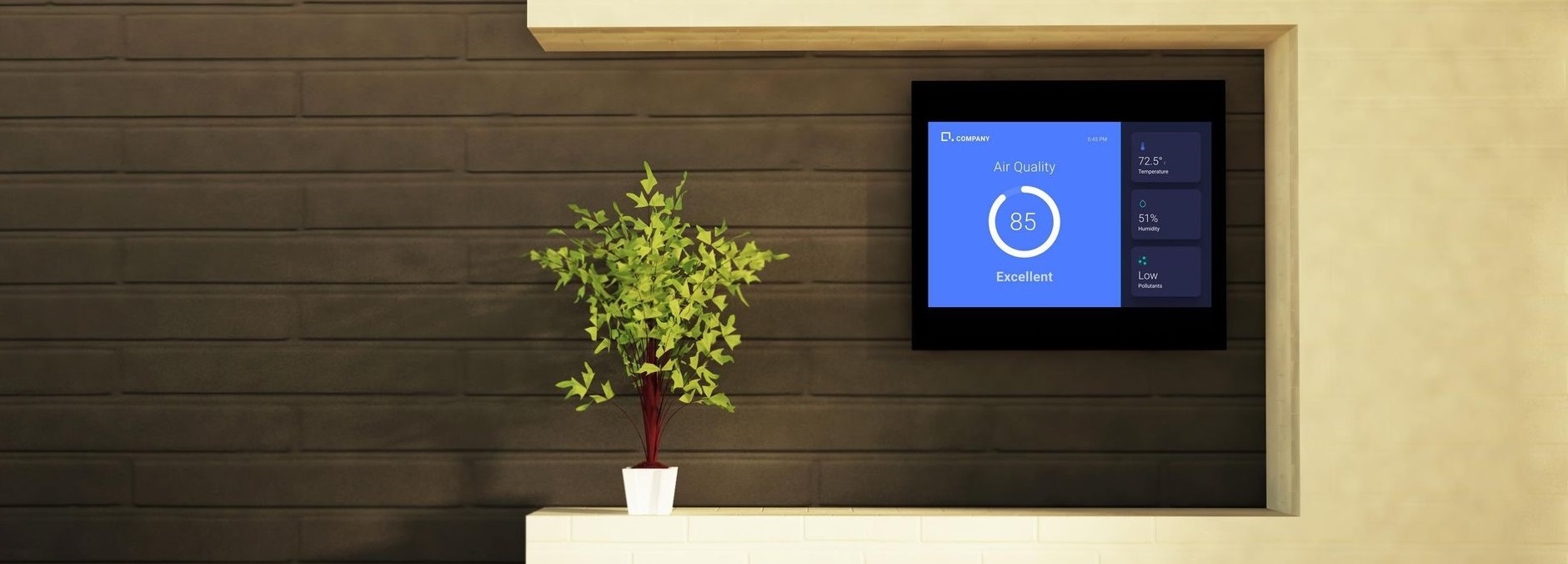Building executives are aware of the historical impacts the pandemic has had on the hospitality industry as hotel, restaurant, and real estate owners scramble to calm guest COVID fears. People are rallying for facility managers to put guest health first and prove they are safe for visitors. Hospitality executives are turning to high-quality air filtration and monitoring systems to give guests peace of mind and get back their competitive edge in marketing.
A Lack of Trust
Across all channels in the hospitality industry, guests are simply still skeptical about placing their trust in the indoor world outside of their home. Travel for business this year is plummeting 85% compared to 2019, according to projections from AHLA’s State of the Industry. Guests no longer think a cleaning sticker on the door is enough. In the restaurant sector, the inability to recruit adequate staff limits an establishment’s ability to expand, and 75% of restaurant owners claim recruitment is their hardest challenge at the moment. The story sounds similar for building executives everywhere. As the public hides inside their homes to escape the Delta variant of SARS-CoV-2, building executives are trying and failing to retain employees and draw in new customers. They’re walking across a tightrope while carrying a cranky Incredible Hulk on their backs.
But there is hope. A recent survey of 1,000+ U.S. consumers revealed that 91% of people “believe that IAQ (Indoor Air Quality) is important in the prevention of COVID-19 spread” and “76% say that a ‘rating system’ on the IAQ of a building would help them feel better about entering that building.”
The Science Behind Fighting Viruses with Air Quality
This isn’t new information. Research shows that improving air quality can be a vital defense against the spread of COVID-19, and the general public is painfully aware. Ensuring the highest quality of air indoors can help dramatically reduce COVID risks, and here’s some of the research to back that up.
If you have poor ventilation, filtration, and humidity levels in a building, you’re essentially laying out the welcome mat for dangerous viruses. Firstly, poor ventilation allows bacteria and viruses such as COVID-19 to circulate and float in the room. The EPA says infected particles can move through an entire indoor space and stay in the air for hours! A pre and post-flushing strategy reduces the concentration of airborne infections particles by 95%, according to ASHRAE’s indoor air quality regulations. Secondly, HEPA filters or UVC purification are excellent choices to upgrade a hotel’s system. Finally, as for humidity, the virus is far less dangerous in lower humidity areas, and it is necessary to use more resources to monitor and ventilate in higher humidity areas.
Systems in place to regulate air quality in indoor spaces should combine recommendations from multiple national and international standards bodies that set air quality standards, including EPA, OSHA, ASHRAE, and others.
Prove Building Safety with QR Codes
Once hotels, restaurants, and other buildings have state-of-the-art filters in place, how can they prove to their guests that they’re actually working? Building executives need to take advantage of new sensor technology that can detect air quality problems within minutes, not days. It’s like a security system for unhealthy air. Once a monitoring system can scrutinize for issues, it can help pinpoint problems for building staff so they can be fixed.
Air quality monitoring systems also play a vital role in alleviating guests’ fears by giving real-time access to a healthy building score. By simply scanning a QR code, guests can see a behind-the-scenes look of what’s in the air they are breathing in real time. Visual dashboards displayed in a hotel lobby or the guests’ rooms can give a comprehensive overview of a building’s humidity, temperature, and CO2 levels. Plus, a LIVE air quality score can be shown off in marketing on social media and on websites.
The Price of Pure Air
Making small affordable changes to a business’s existing air system can defend against the spread of the virus and grant buildings the ability to prove safety to guests. The costs of a smart IAQ monitoring system such as the most modern air quality technology average $200 to $300 per month for a typical hotel. Wireless air quality sensors enable a quick, affordable installation as well.
Many hotels are already spending thousands every month on enhanced cleaning and guest protections, but do guests really trust a sticker on their hotel room door or a sign in a restaurant talking about cleaning routines? There will be significant competition for the guests that are willing to return to the in-person consumer market through the end of 2021 and extending throughout 2022. An air quality monitoring system that proves the building IAQ is safe is a huge differentiator from hotels choosing to say “trust us” with a sticker.
Restaurant, hotel, and other business owners that implement these monitoring measures will have a significant edge over competitors, as they will be able to establish a better relationship with their customers. There is still a clear hesitancy from customers to properly return to a normal dining and travel experience. Therefore, implementing essential air quality and having dashboards with clearly presented metrics in buildings will go a long way to securing customers’ trust.
——————————————————————-

John Bohlmann is the founder and CEO of HawkenAQ, a building technology startup working to make every building COVID-safe and carbon neutral.
Contact HawkenAQ for help If you would like further information on improving indoor air quality and holding back the spread of COVID-19. The HawkenAQ team has extensive experience dealing with indoor air quality issues and can help you find the perfect solution for your building.


